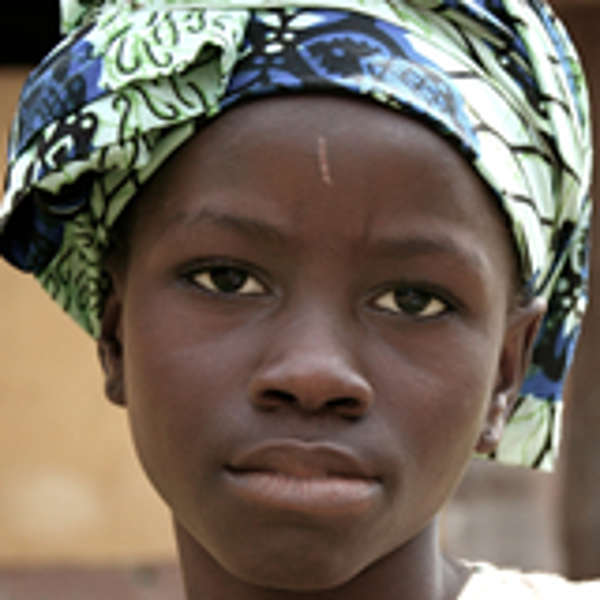How do refugees get resettled in the U.S.?
Refugees entering the U.S. have endured a long, difficult journey
June 17, 2022 | Bethany Marketing Team

In May 2022, the world set a grim new record: 100 million people around the globe have been forced from their homes, according to the United Nations High Commissioner for Refugees (UNHCR), “fleeing conflict, violence, human rights violations and persecution.”
The invasion of Ukraine in early 2022 has forced millions to flee, but Ukraine is only one of many places in crisis around the world. In Ethiopia, Venezuela, Syria, Afghanistan, and many other places, tens of millions of people have been displaced by violence, natural disasters, and severe poverty.
Sometimes, displaced people can return to their homes after the crisis in their community has ended or the political situation has changed. But in many cases, they need a permanent new home. The United States is one country that provides this new home for refugees.
Every year, thousands of refugees are admitted into the U.S. seeking safety and a chance at a new life. But how does a displaced person officially become a “refugee”? How does the U.S. government determine which refugees enter the country? Who helps refugees start a new life in the U.S.? And how do refugees contribute to American society?
In this article, we’ll explore the journey of a refugee resettled in the U.S. and explain how Bethany works together with volunteers and supporters—like you—to help refugees feel safe, loved, and connected.
What is a refugee?
Every refugee story begins with an individual or family who is forced to flee their home and community—usually with little advance warning—because they believe it’s impossible for them to live there safely. In some cases, they’re escaping violent threats from gangs or government officials. In other cases, their communities have become unlivable because of poverty, famine, or natural disasters.
Once they leave their homes, refugees must make a choice: Do they attempt to find a safe home within their country, or do they flee to a neighboring country and seek asylum? People who stay in their countries are referred to as “internally displaced.” About half of the 100 million forcibly displaced people in the world fit into this category.
But for many people, it’s not a safe option to remain in their home country. Often these people flee to a neighboring country to seek asylum. “Asylum” is just another way to say “safe place.” Seeking asylum is a process protected by international law. If a country determines that an individual or family has a reasonable fear of violence or persecution in their home country, they are—or should be—granted asylum status. But even if they are allowed to stay, a displaced family must often live in a refugee camp or other type of temporary shelter. Many countries around the world do not have the resources or infrastructure to be a permanent home for forcibly displaced people.
If displaced people want to find a new home in a country with more resources and support, they can apply for an official “refugee” status with the United Nations refugee agency, also known as the UNHCR, and ask to be resettled in another country. The U.N. evaluates their case and decides whether to refer them to other countries—like the U.S.—to be resettled. Each year, fewer than one percent of applicants are referred for resettlement.
Learn more about the difference between an asylum-seeker and a refugee
How does the U.S. government determine which refugees are resettled here?
The U.S. has a long history of welcoming refugees from around the world. Every 12 months, the presidential administration, together with Congress, determines the maximum number of refugees that can be admitted to the U.S. during the following year. For fiscal year 2022, the Biden administration has set the refugee cap at 125,000.
The federal Bureau of Population, Refugees, and Migration (PRM) is tasked with deciding which refugees will be resettled in the U.S. When a refugee is referred to the U.S. by the United Nations, PRM looks at their case—in consultation with other federal agencies—and decides whether they might be a good candidate for resettlement. But their journey is still just beginning.
Before they arrive here, refugees must pass through an extensive process of interviews, background checks, and medical screenings, conducted by eight federal agencies. The purpose of this process is to confirm that a refugee needs a new home and make sure they do not pose a threat to the U.S. in any way. This process is long and exhausting and can often take up to two years.
Once a refugee passes through all the steps in the screening process, they are officially approved for resettlement in the United States. Then they must wait, again, until their resettlement date arrives, and they are on their way to a new life.
It’s worth noting that, in some extreme situations, this process is shortened or modified. An example is the recent evacuation of over 50,000 Afghans from extreme danger in the wake of the Taliban’s return to power in Afghanistan. Displaced individuals and families were taken to military bases in the U.S. and around the world and granted a temporary status known as “humanitarian parole” while they went through the screening process. But the basic steps of the process are (mostly) the same, even if they sometimes are done in a different order or with a different timeline.
The bottom line is that refugees are in the U.S. legally and have passed through an incredibly thorough vetting process before coming here.
Learn more facts about the refugee vetting process
What happens when refugees arrive in the U.S.?
Once a refugee is approved to come to the U.S., the next question is determining where in the U.S. they will live. The government wants new refugees to be self-sufficient, thriving members of their new communities. Refugees are resettled in communities where this goal can be accomplished as soon as possible. If a refugee already has family in the U.S., they will often be resettled close to them so they can have the support of family as soon as they arrive. As well, refugees often prefer to live close to an existing community of refugees from the same country or culture, for the same reasons.
After deciding where a refugee will be resettled, PRM refers the individual or family to a local resettlement agency like Bethany. The job of these agencies is to help refugees find housing and employment and teach them about the basics of life in their new community—like how to shop for food, how to register their kids for school, how to access health care, and more. Refugees receive a one-time stipend from the government to help cover the costs of starting their new life from scratch. In most cases, refugees only get support from a resettlement agency for 90 days after resettlement.
Learn more about the U.S. refugee resettlement process
How can you help refugees?
Imagine moving to a new country with almost no money or possessions, trying to start a new life in a place where you don’t speak the language and almost nothing is familiar. It would be a daunting, overwhelming task. Now imagine trying to accomplish this in just three months, with only a couple thousand dollars available to you. It would be nearly impossible. Yet this is exactly the challenge refugees often face in the United States.
To fill this gap between government support and the actual needs of refugees, Bethany relies on a network of volunteers and supporters to help refugees start a new life.
We believe welcoming refugees is not the job of the government or an organization like Bethany alone. All of us—especially those who follow Jesus—have a role to play to serve the overlooked and ignored. No matter where you live, your socioeconomic status, your age, or your skills, you can help make a refugee feel safe and welcomed.
Here are some ways you can get involved to help welcome refugees:
- Give a financial gift toward our resettlement programs.
- Volunteer to drive a refugee to a medical appointment.
- Welcome a refugee family at the airport when they first arrive.
- Donate household goods or furniture to help furnish a living space.
- Provide housing or employment.
We also recruit individuals or community groups to co-sponsor newly arrived refugees. Co-sponsorship is a long-term commitment to love and support refugees as they integrate into a new community.
Since the beginning of 2021, Bethany has resettled almost 1,200 refugees from around the world, including over 600 people fleeing violence and chaos in Afghanistan. Our resettlement programs are expanding at an unprecedented rate, and we’re looking for people all over the country to step up and offer the love of Jesus to refugees in their communities.
Sign up to serve refugees by filling out our "Contact Us" form
How do refugees contribute to their communities?
Refugees have significant needs when they first arrive in the U.S. But as they adjust and learn to thrive, they enrich their new communities in so many ways.
According to the National Bureau of Economic Research, while resettling refugees comes with an initial cost, accepting refugees is an investment with a net gain for America’s financial future. The average refugee resettled in the U.S. contributes to the economy the same way Americans do—by paying taxes and starting businesses, paying more in taxes than they receive in benefits.
A report from New American Economy showed refugees paid nearly $21 billion in taxes in 2015. And the U.S. Department of Health and Human Services found that between 2005 and 2014, refugees paid $63 billion more in taxes to all levels of government than they received in benefits.
Refugees also bring a much-needed pool of labor to the U.S., especially when many U.S. businesses are having to scale back or slow down expansion because they can’t find enough employees or the right employees. Indeed, refugees provide a valuable labor pool, including skilled labor. Many refugees come to the U.S. with advanced degrees and skills in a variety of fields.
Refugees also start new businesses at a rate that outpaces the general population. The New American Economy report found that, in 2015, over 180,000 refugee entrepreneurs generated $4.6 billion in business income.
Beyond economics, refugees enrich our communities as living examples of resilience. They help us see the world through the eyes of a different language and culture, and teach us to be grateful for our safety and well-being.
Refugees need what we all need: basic resources, healthy relationships, and sustainable work. But to successfully transition to a new home, they need advocates and friends to walk alongside them, offering critical support.
Bethany believes every person—no matter their background, national origin, or story—deserves to be safe, loved, and connected. And we’re motivated by our faith in Jesus to serve those like refugees, who are incredibly vulnerable and so often overlooked. There’s never been a better time to stand up for refugees, serving them wherever and however we can.



